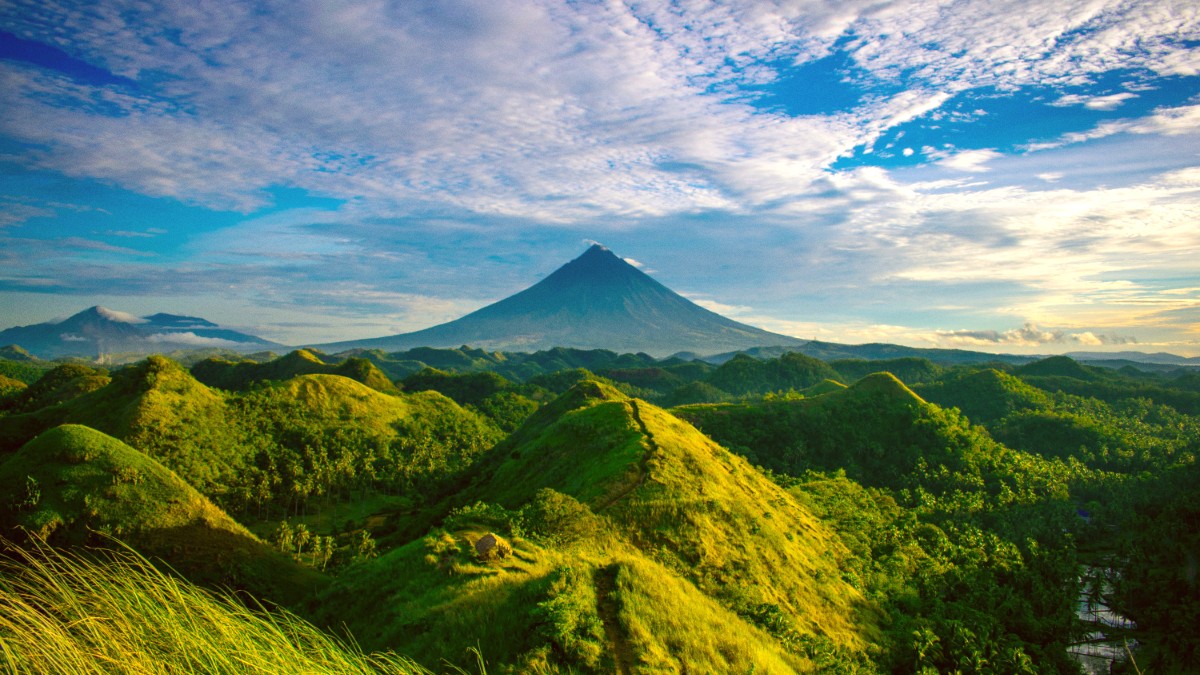
Philippines
Dry Season: This period runs from November to May. Visitors experience less rainfall and lower humidity levels. Outdoor activities become more comfortable.
Wet Season: From June to October, Bicol receives frequent rains. The heaviest precipitation typically occurs from July to September. Daily temperatures average between 25°C and 32°C (77°F to 90°F) throughout the year. Expect consistent warmth. Humidity levels remain consistently high, often exceeding 80%.
Bicol sits in the Pacific typhoon belt. Consult weather advisories from PAGASA (Philippine Atmospheric, Geophysical and Astronomical Services Administration) during these months. Be prepared for potential delays or cancellations. Extreme temperatures happen rarely. However, high heat and humidity can lead to heat exhaustion or dehydration if not properly managed. Maintain hydration and seek shade.
Ideal timing for specific activities: Whale shark interaction (Donsol): February to May (peak March-April). Mayon Volcano trekking & ATV tours: Dry season (Nov-May). Beach & island hopping: Dry season (Nov-May). Surfing (Catanduanes, Camarines Norte): Wet season (Jul-Oct).
Best Weather, More Crowds
Optimal weather for outdoor activities, many festivals, clear Mayon views.
Elevated prices, larger crowds especially during holidays.
Transition, Fewer Tourists
Fewer tourists, potentially lower lodging prices, still good for some activities.
Increased chance of rain in June, November can still experience typhoons.
Rainy, Lowest Prices
Lowest prices for flights & lodging, very few tourists, serene experience.
Frequent heavy rainfall, higher typhoon risk (travel disruptions, activity suspensions).
Citizens of many countries (e.g., US, Canada, EU, most Asian nations) enter the Philippines visa-free, typically for up to 30 or 59 days. Verification of passport validity for at least six months beyond your planned stay is important. A confirmed onward or return ticket is also needed. For those from other countries, a visa application through the nearest Philippine Embassy or Consulate becomes necessary.
The application for a Tourist Visa (9A) involves submitting a form, passport, photos, proof of financial capacity, flight itinerary, and onward/return ticket. Processing times vary. Advance planning is wise. Upon arrival, present your passport, completed arrival card, and onward/return ticket. Biometric data (fingerprints, photo) might be collected. No general entry fees apply. IVisa and VisaHQ assist with applications.
Common tourism activities in Bicol generally do not call for specific national permits. Some eco-tourism sites might have local environmental fees, collected on-site.
Local guides might be needed for certain experiences (e.g., Donsol whale shark, Caramoan island hopping).
No mandatory vaccination for general tourism entry, unless arriving from a Yellow Fever risk country.
Consult a travel health clinic for recommended vaccinations for the Philippines.
Confirmation of an onward or return ticket is useful for visa-free entry.
The Philippine Peso (PHP), symbolized as ₱, serves as the official currency. Major cities like Legazpi and Naga have numerous ATMs, accepting international cards (Visa, MasterCard). Money changers operate in commercial centers. US Dollars (USD) are the easiest foreign currency to exchange. Credit cards find acceptance in major hotels, upscale restaurants, and large retail stores. Cash, however, remains necessary for smaller establishments, local transport, and street food. Carry smaller denominations for convenience.
Your daily expenses in Bicol vary with your travel style:
For a more comfortable journey:
Managing your money wisely while exploring Bicol can enhance your experience.
Prioritizing your health and safety during your Bicol adventure is important.
Verification of your routine vaccinations as current is important (MMR, DTP, Varicella/Chickenpox). Hepatitis A and Typhoid vaccinations are worth considering, specifically if street food or rural stays are on your itinerary. Hepatitis B and Rabies might be options for prolonged outdoor activities involving animals. Japanese Encephalitis could be relevant for extended stays in rural, agricultural areas.
Speak with a travel health clinic or your doctor 4-6 weeks before your trip for personalized advice.
Major cities like Legazpi and Naga have hospitals (e.g., Bicol Regional Training and Teaching Hospital, Bicol Medical Center). Rural areas have more basic clinics. For serious emergencies, transfer to Manila might happen. Well-stocked pharmacies exist in cities.
Hospitals in major cities meet a good standard.
Dial 911 or 117 for police, fire, or ambulance.
Do not drink tap water. Stick to commercially bottled or purified water. Look for sealed bottles. Eat at establishments with good turnover and visible hygiene. Hot, freshly cooked food generally holds more safety. Be cautious with raw vegetables, unpeeled fruits, and street food. A LifeStraw or personal filter is a good backup.
Always opt for bottled or purified water.
Avoid unhygienic food stalls.
Bicol generally stays safe for tourists. Petty crime occurs in crowded areas. Be aware of your surroundings; avoid displaying valuables. No specific "no-go" neighborhoods are usually named for tourists. The region often sees typhoons (Jul-Nov). Mayon Volcano stays active; check PHIVOLCS alerts. Minor earthquakes can happen. Flash floods and landslides are possible during the wet season.
Keep valuables secure and out of sight.
Monitor typhoon and volcano alerts closely.
| Category | Contact | Notes |
|---|---|---|
| Police/Fire/Ambulance | 911 or 117 | National emergency hotline. |
| Your Embassy/Consulate | Refer to your country's official website. | Keep contact info for Manila embassy. |
| Travel Insurance | World Nomads / SafetyWing | Comprehensive coverage is highly recommended. |